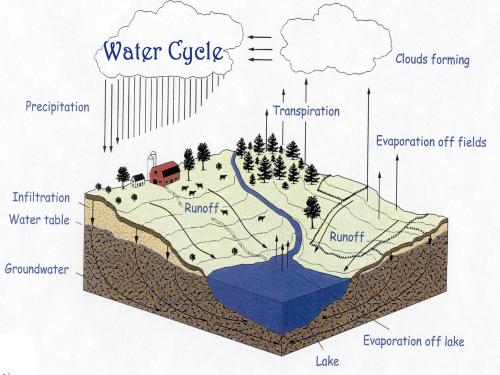Michigan Watersheds and how our actions influence water quality
Whether you have lived in Michigan most or all of your life or you moved here at some point, take some time to learn about Michigan Watersheds so you can do your part to help steward the Great Lakes for the next generations to enjoy.
Michigan residents often take for granted the amazing water resources that exist in the state. It is not surprising that some may not be aware that nearly all waterways in Michigan eventually flow into the Great Lakes, and that our actions in one part of the landscape can affect land and water downstream. This is because everyone lives in a watershed (also called a catchment or drainage basin), an area of land that drains surface water to a particular body of water in the landscape such as a river, lake or stream. Importantly, a watershed includes water above and below the earth’s surface.
Watershed boundaries or drainage divides are the high points in the landscape. Put another way, a watershed catches precipitation from a certain land area and funnels and drains it to a common body of water. For example, all the water contained in the land area (depicted in the image below) drains to the common body of water, in this case a lake.

Photo credit: David P. Lusch, MSU Institute of Water Research
To understand the impact we have on Michigan’s water resources and minimize the damage we might cause to the environment, Michigan State University Extension recommends that you understand these basic principles:
- Everyone lives in a watershed and depends on it to provide a source of clean drinking water, irrigation for crops and recreation to name a few.
- Our actions on the land can potentially affect the health of groundwater and surface water either locally and/or across the state, regardless of where the impacts originally occurred. For example, an adverse impact such as a chemical spill that occurs in one part of the watershed might affect other parts of the watershed as water moves through the land area and gets collected into a common body of water.
- Water that can be seen above ground (surface water) and the water below ground in the form of groundwater is connected through the water cycle. The water cycle, also called the hydrologic cycle, describing the movement of water through its three phases (solid, liquid and gas) that transitions between surface water, the atmosphere, groundwater, plants, animals and the earth’s surface by way of various transfer processes (including condensation, precipitation, runoff, infiltration, evaporation, sublimation and transpiration).
It is extremely important that everyone, whether you are a resident, visitor, teacher or student, to understand how your actions can both local and statewide impacts. The Michigan Sea Grant publication, “An Introduction to Michigan Watersheds,” is a great resource to begin to build your watershed knowledge, and with the holidays upon us, a Michigan Watersheds poster (or the Great Lakes Basin poster) makes a great gift for teachers, students, friends and family.



 Print
Print Email
Email
